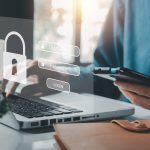Protect Your Email
Protecting Your Email: Why Your Staff Are The Biggest Target
Phishing has been a persistent cyber threat for years. Yet, despite significant advancements in cyber security tools, it remains as a cybercriminal favourite and one of the most effective methods of breaching a business. Why? Because phishing doesn’t target your systems; it targets your people.
In this article, we’ll explore why phishing is successful, why cybercriminals are targeting your staff, and what you can do to protect your business.
What is phishing?
Phishing is a type of cyber attack that manipulates individuals into unknowingly compromising your organisation. This type of attack is a form of social engineering, where attackers exploit human psychology rather than technical vulnerabilities.
Usually, the goal of a phishing email is to get the recipient to click on a malicious link or download an infected attachment. Once the attacker has access, they can steal sensitive information, install malware, or even take control of the victim’s email account sending even more phishing emails to their address book and spreading their attack further.
Why Staff Are Targeted
Employees are the gateway to your business’s sensitive information. Gaining access to an employee’s email can provide an abundance of data, including customer information, financial details, and internal communications. Access to these items can enable further damage including deploying ransomware, data theft, and supply chain attacks.
We mentioned earlier that phishing exploits human psychology rather than technical vulnerabilities. One of the ways cyber criminals do this is by mimicking trusted sources. An email that appears to be from a known entity, like Microsoft or a finance director, can really easily trick an unsuspecting staff member. Cybercriminals exploit this trust by crafting emails that look legitimate, increasing the likelihood that employees will engage with the phishing email.
Also, the sheer volume of emails employees receive daily adds to the challenge of identifying the malicious ones. With so many emails to sift through, it’s easy for a phishing email to slip through the cracks, especially if it looks genuine. Work culture adds to this – if employees are working at absolute capacity and are too busy, it’s unlikely they’ll scrutinise a phishing email long enough to see it’s a phishing email, especially when it appears to be from a trusted source.
The Impact of Phishing Attacks
According to the government’s Cyber Security Breaches Survey 2024, 84% of UK businesses that had experienced a cyber attack, reported phishing as the cause. This shows that phishing emails are a successful attacking method and the implications that phishing has on businesses needs to be taken seriously.
Successful phishing attacks can have an impact on businesses’ finance, operations, and reputation. Financially, they can lead to significant losses through fraudulent transactions and then recovery efforts. Operationally, the disruption can result in prolonged downtime and lost productivity, affecting not just the business but also its customers. The reputational damage from a cybersecurity breach can impact customer trust and loyalty, making it difficult to restore the brand’s image. Additionally, businesses may face legal and regulatory consequences, including fines, for failing to protect sensitive data.
Steps to Protect Your Business
So we know that phishing is a big problem for businesses and we know that it has serious implications, but what can we actually do to help prevent it? Here’s our top tips:
Education and Training: We’ve spoken about how phishing exploits human nature, so the best way to prevent successful phishing attacks is to educate humans. Regularly educate your staff about the latest phishing tactics and how to recognise suspicious emails. Training should be ongoing and include real-world examples. Employees should know how to identify phishing emails, what to do if they receive one, and the importance of reporting suspicious activity.
Address Your Company Culture: As mentioned earlier, company culture plays a role in successful phishing too. If your staff are simply too busy and are firefighting to keep on top of their workload and their inbox, they’re more likely to fall for a phishing scam. Additionally, try to encourage an environment where employees feel comfortable reporting suspicious emails without fear of reprimand. Encourage them to be vigilant and to question anything that seems out of the ordinary. A culture of vigilance can help to prevent phishing attacks and other security breaches. For phishing emails, addressing your company culture and staff work load becomes an important security measure.
Implement Multi-Factor Authentication (MFA): MFA adds an extra layer of security so that even if a hacker has your password, they can’t access your accounts without approval via a second method (usually an authentication app on your phone).
Deploy Microsoft Defender for Office 365: This tool protects against phishing, business email compromise, and other advanced threats. It includes features like safe attachments and safe links, which help to detect and block phishing and malware attacks. This decreases the chance of a phishing email landing in your employees’ inbox, so it doesn’t have opportunity to exploit human nature.
Use Exchange Online Protection (EOP): EOP provides robust anti-spam and anti-malware protection, ensuring that malicious emails are filtered out before they reach your inbox. Again, this decreases the chance of a phishing email landing in your employees’ inbox, so it doesn’t have opportunity to exploit human nature.
Regular Security Audits: Conduct regular security audits to identify and address vulnerabilities in your email systems and overall IT infrastructure. Security audits can help you understand where your weaknesses are and how to address them. They should be part of a comprehensive security strategy that includes regular updates and patches to your systems.
In Conclusion…
Protecting your email is not just about having the right technology in place; it’s about empowering your staff to be the first line of defence against cyberattacks. By understanding the human element in cybersecurity and taking proactive steps to educate and protect your employees, you can significantly reduce the risk of a successful phishing attack.
We hope you found this article useful. If you’d like to lean on our expertise and implement the protective measures listed, please fill in the form below.










